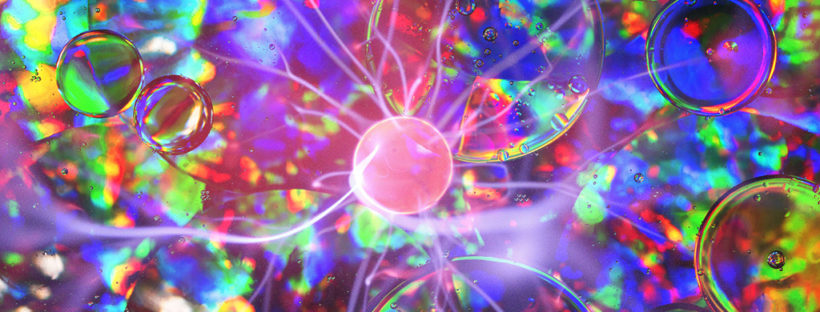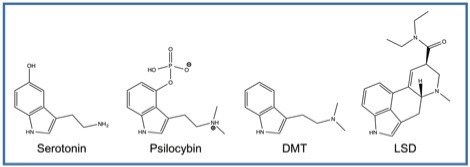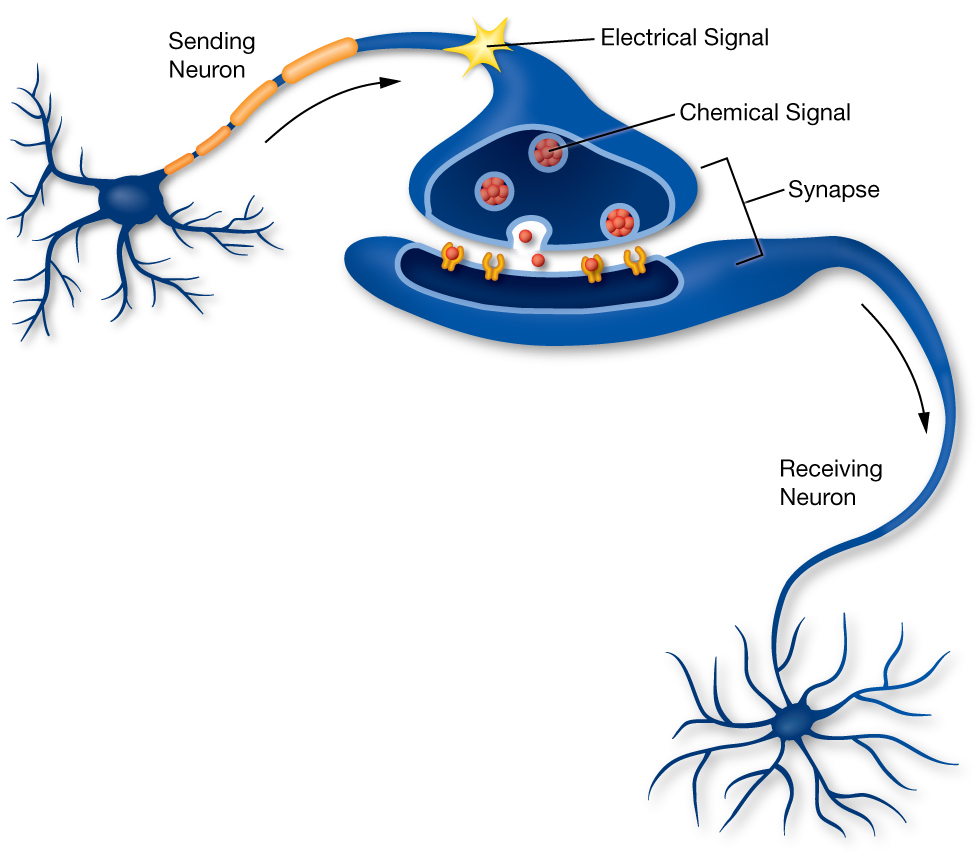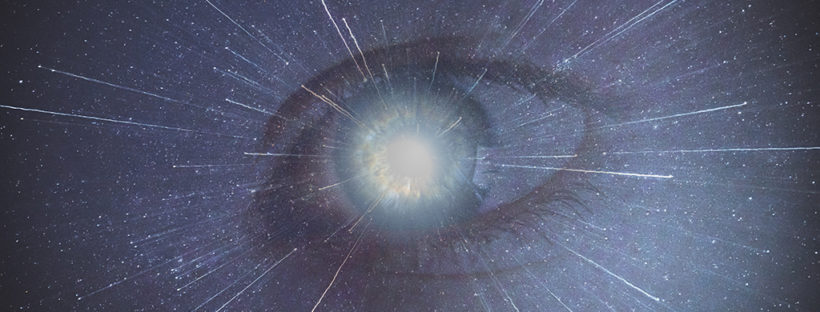With science’s new interest in studying psychedelic compounds, we may be on the advent of destigmatizing psychedelics.
Are they drugs that “put holes in your brain” or therapeutic medicines capable of expanding the mind and treating mental disorders, traumas and additions?
Sooo… which is it? Or is it both?
What exactly is happening inside your brain, neurologically, when psychedelics mix with your body chemistry?
Let’s dive deeper. Beyond the trip’s experiential effects and into the science of psychedelics, specifically into its effects on the biochemistry and neurology within the brain.
Experiential effects may include:
- Hallucinations. Seeing patterns, colors, and figures both with the eyes and within the mind’s eye
- Increased sensory experiences
- Changes in time and perception
- Nausea, vomiting (Seen more specifically with ayahuasca)
- Anxiety or paranoia
What psychedelic substances are we referring to, exactly?
In this article, we are examining the effects of ayahuasca, DMT, ketamine, LSD and psilocybin. In this article, we refer to these substances within the general term, “psychedelics”.
But first, let’s briefly run through each:
- Ayahuasca – A psychedelic brew made primarily from the leaves of the Psychotria viridis shrub along with the stalks of the Banisteriopsis caapi vine. The psychoactive compound within it is known as N, N-dimethyltryptamine (DMT). When ingested, it usually gets rapidly broken down by enzymes called monoamine oxidases (MAOs).
Banisteriopsis caapi contains potent MAO inhibitors (MAOIs) called β-carbolines, that allow the DMT within the ayahuasca to have psychedelic effects.
Traditionally used for spiritual purposes by tribes in. the Americas, specifically in the Amazonian region.
Trips last about 6 hours.
- DMT – DMT, or N, N-dimethyltryptamine, is a psychoactive molecule found in many plant species. It can be combined with an (MAOI) and drank as a tea or smoked directly.
Trips last 25-45 mins.
- Ketamine – Ketamine is a dissociative anesthetic that was developed in the early 1960s and used in human and veterinary medicine for anesthesia. It can be taken orally in pill or liquid form, snorted or taken intravenously. It is a sedative, analgesic and a paralytic. It can cause hallucination and disassociation.
Traditionally used as an anesthetic and as an alternative to phencyclidine (PCP), which caused powerful hallucinations that usually were longer lasting than ketamine.
Trips last 40 mins -2 hours depending on dosage.
- LSD – Synthetically created psychedelic manufactured from lysergic acid, which is found in the ergot fungus that grows on rye and other grains. Typically manufactured into liquid form, then placed onto little paper dots taken orally.
Trips last about 12 hours.
- Psilocybin – A psychedelic found in over 20 different species of mushrooms. Once ingested, psilocybin is converted by the body into psilocin, a psychoactive compound. Also known as “shrooms or “magic mushrooms”.
Traditionally used by indigenous cultures in spiritual practice.
Trips last about 6 hours.
We are omitting various psychedelic substances such as PCP, DOI, mescaline and marijuana for simplification and narrowing down of information based on research.
We have much left to discover about the intricate interactions of psychedelics and the brain. Here’s what we’ve found so far based on research.
1. Your DMN Activity is Reduced or “Shut Off”
In 2012, tests done by English neuropsychopharmacologist, David Nutt, found reduced blood flow to the Default Mode Network (DMN), in the brain.
Latter neuroimaging tests concluded that neural activity in the Default Mode Network was dramatically reduced due to psychedelics.
What is the Default Mode Network (DMN)?
The Default Mode Network is a network of pathways that play a major role in the automatic (default) functioning of the mind at rest. This includes functions such as autobiographical recollection, mind wandering and processing self-related information. As its name implies, it automatically starts working when your mind is wandering or thinking about the self.
When attention is placed on the external environment, a.k.a “being in the moment”, the DMN is less active.
So basically, when your “in your mind” your DMN is working and when your “in the now”, it’s function is reduced.

The reduced function of the DMN under the effects of psychedelics resembles a brain under meditation. Meditation also reduces the activity in the DMN.
The DMN has been associated with associations of the “ego” or “self”.
This depression of neural activity leads to feelings of disassociation with self and “oneness”, “wholeness” an “connection to all”.
2. Decrease in Thalamic Activity
In one study done by Carhart-Harris, from brain imaging of volunteers on Psilocybin showed decreased activity in the thalamus gland. The thalamus gland functions as a relay station, or gatekeeper, for sensory information. It is also involved complex brain processes related to consciousness, like sleep and wakefulness. The thalamus plays an integral role in cortical processing in general for higher-order brain processing of various types.

Since the thalamus acts as a gatekeeper, it’s reduced function allows for freer information transfer and changes in consciousness, such as feelings of sleep or wakefulness.
3. Increase in the Overall Connections in Your Brain
Along with a decrease in DMN and Thalamic neural activity, researchers saw an increase in neural activity between brain networks under psychedelic compound influences in neuroimaging studies.
A study, Homological scaffolds of brain functional networks, published Dec. 6, 2014, studied the effects of psilocin, the psychoactive compound in psilocybin on 15 healthy test subjects, each scanned on 2 separate occasions.
The active ingredient in the psychedelic drug, psilocybin, seems to completely disrupt the normal communication networks in the brain, by connecting “brain regions that don’t normally talk together.”
– Paul Expert, co-author of Study on “Homological scaffolds of brain functional networks”. Physicist at King’s College London. https://royalsocietypublishing.org/doi/full/10.1098/rsif.2014.0873
The DMN, the salience network, (which helps identify behaviorally relevant information), the frontoparietal network, (involved in attentional control and conscious awareness), all show stronger connections to each other.
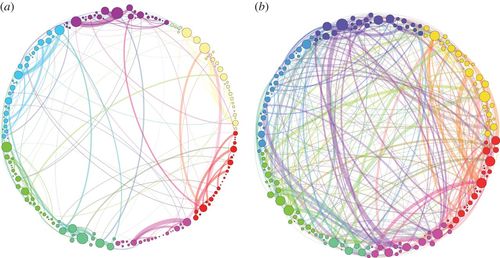
Psilocybin appears to relax the constraints on brain function. This allows for brain function to occur in a more flexible and holistic manner. The default organization of the brain transforms into a strong, stable, topologically long-range functional connections.
“These functional connections support cycles that are especially stable and are only present in the psychedelic state. This further implies that the brain does not simply become a random system after psilocybin injection, but instead retains some organizational features, albeit different from the normal state.”
– https://royalsocietypublishing.org/doi/full/10.1098/rsif.2014.0873
Researchers observed more connections between neurons in different areas of the brain perfectly synchronized in space and time. The effects studied are found to be similar to those found in the brain during meditation.
LSD study shows neurological effects on the brain
Researchers from the Psychedelic Research Programme, jointly set up by the Beckley Foundation and Imperial College London have published their research on the effects on LSD on the brain. They applied multimodal neuroimaging to subjects who were injected with LSD.
This study shares the findings of LSD on the brain’s network communication, blood flow and electrical activity using fMRI BOLD, arterial spin labeling and magnetoencephalography (Carhart-Harris et al., 2016).
Similar to the psilocybin study, They found the LSD decreases communication in the DMN and increases holistic, globalized communication between various brain regions. They found that the highest level of communication occurred in the regions with the highest density of serotonin-2A (5-HT2A) receptors, LSD acting as an agonist to this type of receptors.
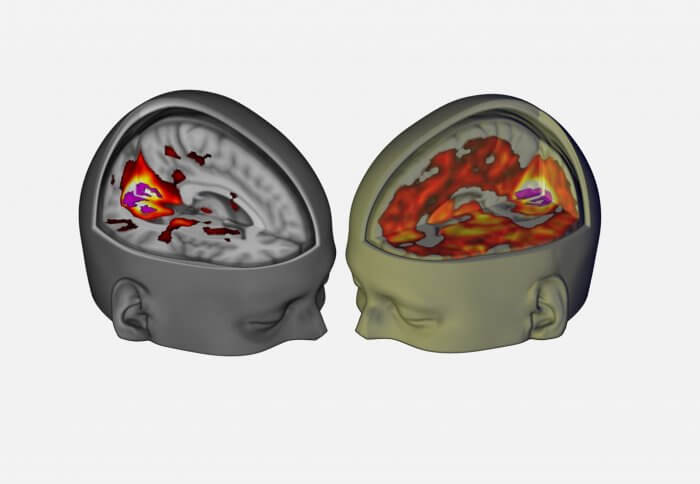
They also found similar brain patterns in the effects of psilocybin and the brain in dream state.
“I was fascinated to see similarities between the pattern of brain activity in a psychedelic state and the pattern of brain activity during dream sleep, especially as both involve the primitive areas of the brain linked to emotions and memory. People often describe taking psilocybin as producing a dream-like state and our findings have, for the first time, provided a physical representation for the experience in the brain.”
-Dr. Robin Carhart-Harris https://www.imperial.ac.uk/news/152867/new-study-discovers-biological-basis-magic/
As DMN activity disintegrates under LSD, it allows for a magnificent increase in communication between brain networks that are normally highly segregated. This produces a more integrated pattern of connectivity throughout the entire brain, which may be associated with more fluid modes of cognition.

Brain scans have shown that ayahuasca increases the neural activity in the brain’s visual cortex and limbic system while also quieting the brain’s DMN. The limbic system is responsible for processing memories and emotions.
Research suggests that this holistic interconnected brain function plays a key role in the drugs’ effects. The magnitude of this effect is directly correlated to the strength of the subjective experience of ‘ego-dissolution’ and feelings of oneness and unity.
Does a decrease in DMN/thalamic activity hurt my brain?
A decrease in the DMN does not show adverse effects to your brain. Effects of reductions to the DMN are similarly found within your brain when your attention is focused on your environment in the present moment, dreaming, within an enhanced emotional state or being or in meditation.
Does an increase in neural network connectivity hurt my brain or overload it?
When connectivity between sections of the brain increases, research shows that your brain is not under pressure or troubled.
“There was dramatic temporary reorganization of the communication in great enhancement in neuronal activity and communication. The new connections were perfectly synchronized in space and in time. It’s almost as if your brain knows how to do that stuff, by default but it’s forgotten it.”
– Simeon Keremedchiev https://www.youtube.com/watch?v=FyAgx_tzh80#t=11m43s
Your brain is not troubled or but under pressure, but is doing what it naturally does.
“[Psylocin doesn’t] agonize your receptors or do harm to them. ..They bind with them. The Psylocin molucule is an exact replica of your seretonin molecule which you produce by yourself. …It doesn’t do any harm to the receptor, doesn’t cause toxicity, no tissue damage and the exact same copy as seratonin.”
– Simon Keremedchiev https://www.youtube.com/watch?v=FyAgx_tzh80#t=6m50s
4. Psychedelics Promote Neuroplasticity, Neuronal Growth & Connection
Under the effects of psychedelics, as the functionality within the DMN decreases, your brain will use new connections for the signal stimulus of the thoughts and actions that you are having.
Using these new connections leads to new ways of processing information and emotions.
This reorganization is known as neuroplasticity.
Neuroplasticity is the ability of the brain to change continuously throughout an individual’s life, e.g., brain activity associated with a given function can be transferred to a different location, the proportion of grey matter can change, and synapses may strengthen or weaken over time.
– https://en.wikipedia.org/wiki/Neuroplasticity
A study done by David. E Olson and team showed evidence that Serotonergic psychedelics increase neuroplasticity including neuritogenesis, spinogenesis, and synaptogenesis.
“When we grew neurons in a dish—which is not unlike growing a plant in a pot—and fed them psychedelic compounds, the neurons sprouted more dendritic branches, grew more dendritic spines, and formed more connections with neighboring neurons.”
-David E. Olson https://www.livescience.com/62802-psychedelic-drugs-change-nerve-cells.html
Anatomy of a Neuron
So cool, psychedelics promote new creations of neuritogenesis, spinogenesis, and synaptogenesis. What exactly is happening here?
- Neuritogenesis – The formation of new neurites (axons/ dendrites) that extend from the cell body.
- Spinogenesis – The formation of new dendritic spines in neurons.
- Synaptogenesis – The formation of synapses between neurons in the nervous system.
It’s basically an increase in the number of dendrites, dendric spines and axons and receptors (synapses) in the brain.
So what does this look like, exactly?
Here’s what a neuron looks like
Within the soma, or the main part of the cell is the nucleus containing the typical components of a human cell. What sets the neuron cell apart are its little branches that serve to send and receive information – axons and dendrites.
Axons primarily take information from the cell outward and dendrites primarily take information from outside to the neuron.
Here is a close up of their synapses that are used to relay information between neurons.
that psychedelics promoted synaptogenesis by increasing the density, but not the size of synapses. Ex vivo slice recordings revealed that both the frequency and amplitude of spontaneous excitatory postsynaptic currents (EPSCs) were increased following DMT treatment.
It is important to note that the promotion of neural growth by these psychedelics may not always be a good thing. More research has yet to be done on the promotion of growth of neurons caused by psychedelics.
More Detail Into Psychedelic Effects & Neuroplasticity
The neuroplasticity-promoting effects of psychedelics classifies them as psychoplastogens.
What are psychoplastogens?
Psychoplastogens are neurotherapeutics that promote rapid structural plasticity and neuroplasticity.
Research shows that all of these compounds work by activating mTOR—a key protein involved in cell growth.
Serotonergic psychedelics, such as psilocybin bind to the 5-HT2A serotonin receptors. The 5-HT2A serotonin receptor is the primary receptor responsible for the hallucinogenic effects of psychedelics.
Higher 5-HT2A binding affinity generally predicts more potent psychoplastogenic effects.
Keep in mind that higher levels of dysregulated (regulatory impaired) mTOR have also been shown to be present in diabetes, obesity, depression and certain cancers. That is not to conclude that psychoplastogens cause these effects, just that mTOR is a key protein involved in cell growth.
5. No Evidence of Addictive Potential
Unlike dopamine stimulating substances, which are shown to be addictive, psychedelics act primarily on the serotonin system. This has been shown to have negligible habit-forming potential and shows no evidence of addiction.
One psychedelic, Ketamine, stimulates the NMDA glutamate receptor, instead of the 5-HT2A serotonin receptor, and is found to have addictive potential.
The psychedelic, ayahuasca, is used to treat addictions to other substances such as cocaine, heroin and alcohol.
6. Potential Harmful Effects Observed From Psychedelics
The majority of these psychedelics show no harmful effects. Studies show that chronic frequent ketamine users show impaired on spatial working memory, pattern recognition memory, and dissociative effects
Frequent ketamine use is associated with impairments in working memory, episodic memory and aspects of executive function as well as reduced psychological wellbeing. ‘Recreational’ ketamine use does not appear to be associated with distinct cognitive impairments although increased levels of delusional and dissociative symptoms were observed. As no performance decrements were observed in the ex‐ketamine users, it is possible that the cognitive impairments observed in the frequent ketamine group are reversible upon cessation of ketamine use, although delusional symptoms persist.
–https://onlinelibrary.wiley.com/doi/abs/10.1111/j.1360-0443.2008.02394.x
Urinary tract disease was also found to be associated with chronic ketamine use.
Prolonged, frequent psychedelic creates resistance to its effects. This was also demonstrated cross psychedelic substances, meaning frequent chronic use of one can cause resistance to another.
Psychedelics & Mood Disorders
Atrophy of neurons in the prefrontal cortex (PFC) plays a key role in the pathophysiology of depression and related disorders. Psychoplastogens that promote neurological growth in the PFC have been shown to have anti-depressive potential.
Psychoplastogens promote neurological growth in the prefrontal cortex (PFC). This is the area of the brain involved in emotional expression and management, personality expression, planning, decision making and social skills.
“Depression, post-traumatic stress disorder (PTSD), and addiction share common neural circuitry and have high comorbidity.”
–Arnsten, 2009, Russo et al., 2009, Peters et al., 2010, Russo and Nestler, 2013
The structural changes induced by psychedelics appear to result from stimulation of the TrkB, mTOR, and 5-HT2A signaling pathways and could possibly explain the clinical effectiveness of these compounds.
“Like ketamine, serotonergic psychedelics and entactogens have demonstrated rapid and long-lasting antidepressant and anxiolytic effects in the clinic after a single dose.”
–Bouso et al., 2008, Carhart-Harris and Goodwin, 2017, Grob et al., 2011, Mithoefer et al., 2013, Mithoefer et al., 2016, Nichols et al., 2017, Sanches et al., 2016, Osório et al., 2015
They have the capacity to
- Heal and reframe trauma.
- Expand and redefine your perspective thus leading to new insights and opinions.
- Biologically create new neural networks leading to using new parts of your brain in new ways.
Several reports suggest that psychedelics are capable of increasing brain-derived neurotrophic factor (BDNF). The role of BDNF in both neuritogenesis and spinogenesis is well known. Fear extinction can be enhanced by increasing levels of brain-derived neurotrophic factor (BDNF) in the PFC.
Short vs Long-Term Effects
The short-term effects of psychedelics, occurring within the duration of the trip, are feelings of oneness, connection, love, self-acceptance, feelings of enlightenment, loss of self, loss of the concept of time, awe and transcendence deep spiritual understanding.
Psychedelics are also found to have long-term psychological effects, which persist long after the trip is over.
They include:
- Openness to experience and new perspective on life
- Depression and anxiety gone for after 6 months after 1 use
- No evidence of addition and found to treat additions.
- Loss of self, changes in the concepts of time
“A growing body of evidence suggests that classical psychedelic compounds such as LSD, psilocybin and DMT in ayahuasca can promote enduring changes in personality traits, attitudes and beliefs… Focusing more specifically on psilocybin, a single high dose of this naturally occurring compound was associated with enduring increases in trait openness, psychological wellbeing and life satisfaction in healthy volunteers 14 months later.”
–https://journals.sagepub.com/doi/full/10.1177/0269881117748902
A group of researchers from Johns Hopkins School of Medicine led by Griffiths conducted a study to assess the immediate and long-term psychological effects of the psilocybin experience, using a modified version of the mystical experience questionnaire and a rigorous double-blind procedure.
The 2006 study, sponsored by the government, included 40 people of ages between 40-45. Their profiles were of the typical adult with children, college degrees and jobs. 1 in 3 reported that taking mushrooms was the most spiritual experience in their lives and the top 5 significant experiences of their lives.
In Brief
Psychedelics reduce the function of the DMN and thalamus, which act as regulators for brain activity.
When met with a stimulus generated from a thought or emotion, different organizational functions occur within the brain to process the stimulus.
This has shown to stimulate neuroplasticity and neurogenesis.
Psychedelic compounds such as LSD, DMT, ketamine and psilocin increase neuronal growth including dendritic arbor complexity. They promote dendritic spine growth and stimulate synapse formation.
The long-lasting effects of psychedelics after the trip show greater levels of emotional wellbeing and are showing potential in the treatment of addiction, trauma and mental disorders.
Resources:
- https://www.neuroscientificallychallenged.com/blog/know-your-brain-default-mode-network
- https://www.ncbi.nlm.nih.gov/pubmed/25904238
- https://www.ncbi.nlm.nih.gov/pmc/articles/PMC5416685/
- https://smw.ch/article/doi/smw.2019.20124
- https://beckleyfoundation.org/resource/amanda-feildings-talk-at-horizons-2017/
- https://www.huckmag.com/art-and-culture/scientists-reveal-worlds-first-images-human-brain-lsd/
- https://www.cell.com/cell-reports/fulltext/S2211-1247(18)30755-1
- https://www.stichtingopen.nl/brain-imaging-reveals-the-action-of-lsd-on-the-human-brain/
- https://taileaters.com/psychedelics/default-mode-network-psychedelics/
- https://en.wikipedia.org/wiki/Neuroplasticity
- https://www.youtube.com/watch?v=6A-RqZzd2JU
- https://www.frontiersin.org/articles/10.3389/fnhum.2014.00020/full
- http://sitn.hms.harvard.edu/flash/2015/worth-the-trip-psychedelics-as-an-emerging-tool-for-psychotherapy/
- https://www.rollingstone.com/culture/culture-news/what-psychedelics-really-do-to-your-brain-112948/
- https://thedrugclassroom.com/video/lsd-study-sheds-light-on-psychedelic-brain-activity/
- https://maps.org/news/bulletin/articles/420-bulletin-spring-2017/6611-a-new-era-for-psychedelic-medicine
- https://www.pnas.org/content/113/17/4853
- https://sapiensoup.com/brain-on-psychedelic-drugs
- https://www.neuroscientificallychallenged.com/blog/know-your-brain-default-mode-network
- https://www.livescience.com/62802-psychedelic-drugs-change-nerve-cells.html
- https://www.livescience.com/48704-odd-facts-about-magic-mushrooms.html
- https://www.livescience.com/48502-magic-mushrooms-change-brain-networks.html
- https://en.wikipedia.org/wiki/DrugScience
- https://www.drugabuse.gov/publications/hallucinogens-dissociative-drugs/how-do-hallucinogens-lsd-psilocybin-peyote-dmt-ayahuasca-affect-brain-body
- https://inifoundation.org/insights/2018/7/16/psychedelics-promote-neuroplasticity
- https://psychonautwiki.org/wiki/DOI
- https://www.the-scientist.com/multimedia/infographic-the-brain-on-psychedelics-30994
- https://www.thedailybeast.com/psychedelic-drugs-affect-how-the-brain-is-wired
- https://www.ncbi.nlm.nih.gov/pmc/articles/PMC6082376/
- https://www.healthline.com/nutrition/ayahuasca#what-it-is
- https://en.wikipedia.org/wiki/Psilocybin
- https://www.drugsand.me/en/drugs/ketamine/
- https://www.neuroscientificallychallenged.com/blog/know-your-brain-thalamus
- https://onlinelibrary.wiley.com/doi/abs/10.1111/j.1360-0443.2008.02394.x
- https://www.imperial.ac.uk/news/152867/new-study-discovers-biological-basis-magic/
- https://journals.sagepub.com/doi/full/10.1177/0269881117748902
- https://www.stichtingopen.nl/brain-imaging-reveals-the-action-of-lsd-on-the-human-brain/
- https://beckleyfoundation.org/pnas-lsd-correlates/https://beckleyfoundation.org/pnas-lsd-correlates/
- http://www.differencebetween.net/science/health/difference-between-thalamus-and-hypothalamus/
- https://medicalxpress.com/news/2018-07-neuron-axons-spindly-theyre-optimizing.html
- https://learn.genetics.utah.edu/content/neuroscience/neurons/
- https://en.m.wikipedia.org/wiki/MTOR
